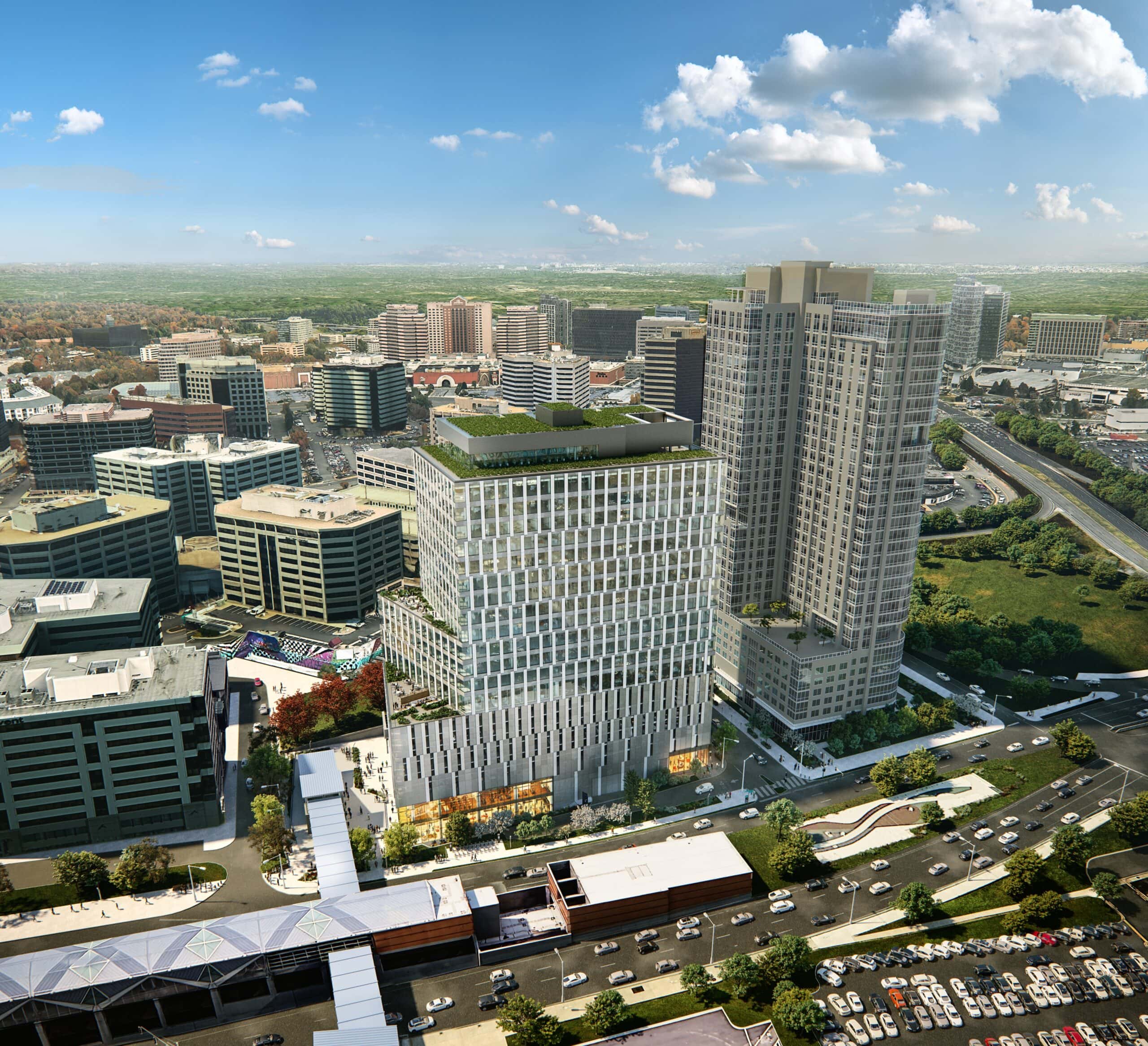
Tysons Office Owners Still Waiting For Shift to Suburbs As Leasing Remains Slow
POSTED
12.16.20
Tysons, one of the country’s largest suburban office hubs, appears well-positioned to benefit from an anticipated pandemic-related shift in demand away from downtowns. But while office developers in the market hope to capture that demand, they have yet to see it materialize.
Tysons has 31M SF of office space, the largest submarket in the D.C. suburbs, according to Transwestern. It experienced negative absorption in Q3 of 83K SF, Transwestern’s latest report found, and it recorded 26K SF of negative absorption through the first nine months of the year.
“This year has been very slow from a leasing perspective,” Foulger-Pratt Vice President of Development Robert Abt said. “Deals that have been done this year were deals that started pre-COVID and the momentum carried them through. What we found is most tenants just hit the pause button.”
Foulger-Pratt, in partnership with USAA Real Estate, broke ground in November 2019 on Tysons Central, a 25-story, 384K SF spec office building near the Greensboro Metro station.
The project represented the only under-construction office space in Tysons as of September, according to Transwestern. Abt said the team had the option to halt construction once the coronavirus pandemic struck, but it decided to push forward with the spec project.
“We and our partners are very bullish about the Tysons market,” Abt said. “Even with the uncertainty posed with COVID, when we probably could have stopped the project, we made the decision to move forward even with the added uncertainty because we’re confident in the long-term prospects of Tysons.”
Construction on the project is scheduled to top out by February and deliver by the first quarter of 2022. Abt said he has started to see an increase in touring activity from prospective tenants over the last month as news of effective vaccines has restored some confidence to the market.
He said the activity has largely been in the technology and government contracting sectors. The developer is looking to kick off the leasing at Tysons Central with one or two large, multi-floor tenants, rather than leasing it piecemeal to small tenants. He said he has seen a slowdown in new construction this year, so Tysons Central will be one of the only new developments with large blocks of available space when it delivers.
“If a tenant wants new office space or wants absolutely first-class space with blocks of meaningful size, there’s not much available in Tysons right now,” he said. “We’re very bullish about our position in the marketplace having made the not-easy decision to move forward when COVID hit, but we believe that’s going to uniquely position us in the market with the blocks of space we can offer.”
While Foulger-Pratt chose to push ahead with its spec office project, multiple other developers in Tysons are choosing to wait for a pre-lease before beginning construction. For some, that pre-lease has been difficult to find.
Cityline Partners has multiple office buildings planned at its Scotts Run development. The buildings range from 400K SF to 600K SF, and Cityline Managing Director Donna Shafer said it would want to pre-lease at least half of a building before breaking ground.
“From a development perspective, it’s a little frightening to be spec on 400K SF or 500K SF of new development,” Shafer said. “And from the user side, it’s a little intimidating because we don’t know what the workplace looks like in the coming years.”
Shafer said Cityline will likely seek flexibility from the county to reduce the density of its planned office buildings, because she doesn’t see large tenants on the market that could anchor one of the new buildings as they are planned today.
“We have sites approved for some massive office buildings. I don’t think the market for those is very deep at all right now, so we’re probably going to need flexibility in terms of allowing a decrease in some of that density,” Shafer said. “Being able to scale that density back is an important piece of flexibility that will allow Tysons to succeed and take advantage of this opportunity coming out of the pandemic.”
Tysons has the opportunity to benefit from office demand shifting away from downtown, Shafer said, but she added that it is too early to point to evidence of that trend occurring, because many companies have been delaying leasing decisions.
“I believe there is a great opportunity because we are the best of both worlds,” she said. “There is a dynamic urban center, but we still have the attributes of the suburbs.”
Abt also said he sees Tysons as well-positioned to benefit from a migration away from downtown areas, but the only evidence of that shift he is seeing today is in the residential market.
“All leading indicators suggest that moving to areas of a little bit less density but still on transit is, in fact, happening. Certainly it’s happening in residential, I think there’s a lot of evidence to that,” he said. “I think it’s very likely to happen on the office leasing side, but I think the data’s too early to point to anything real specific.”